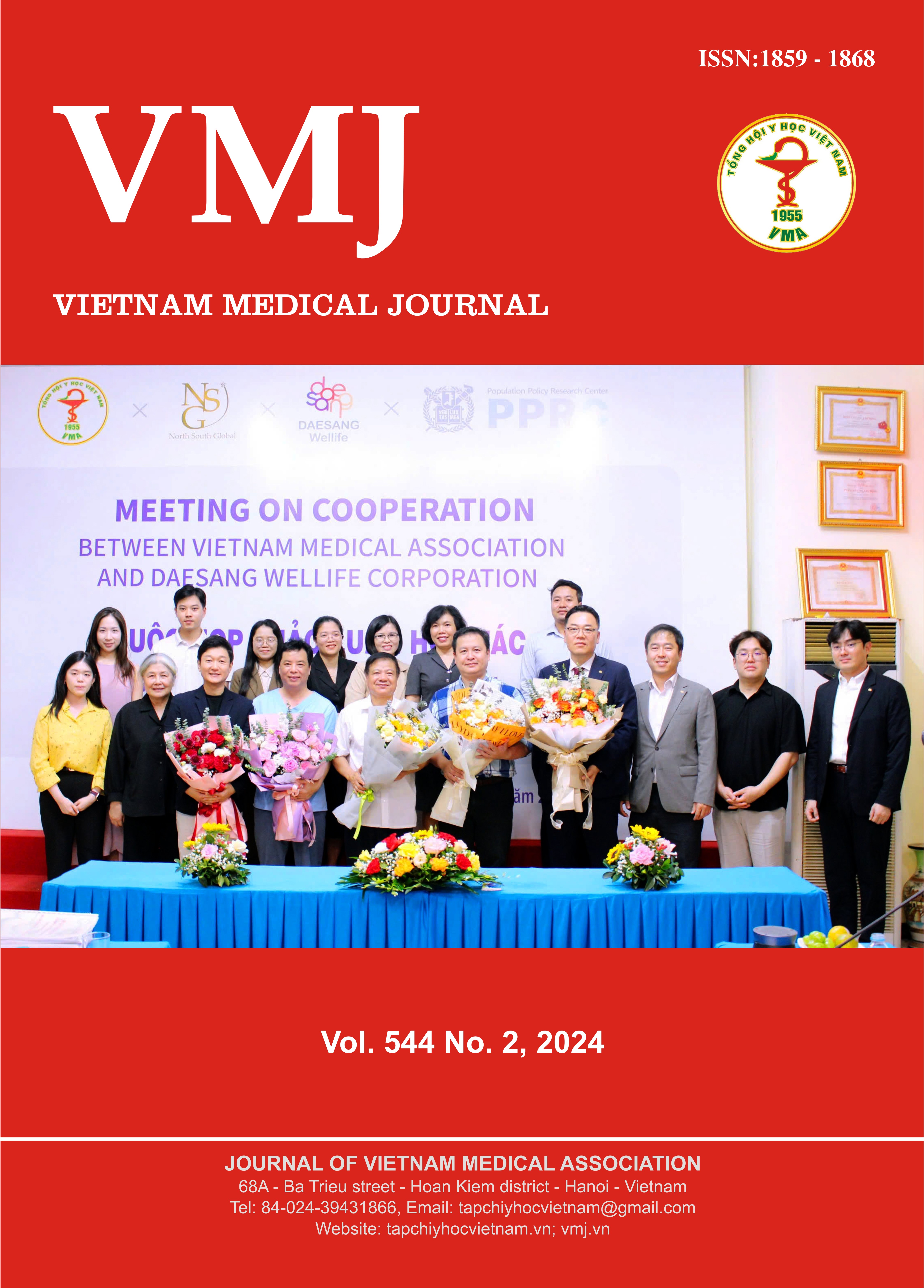ENHANCING PRENATAL DIAGNOSTIC YIELD OF CHROMOSOMAL ABNORMALITIES BY COMBINED IMPLEMENTATION OF ARRAY-CGH AND TRADITIONAL KARYOTYPING AT HANOI OBSTETRICS AND GYNECOLOGY HOSPITAL
Main Article Content
Abstract
Background: While karyotyping remains the gold standard for prenatal diagnosis of chromosomal abnormalities, it is limited to detecting alterations larger than 5 Mb (over 5 million base pairs). In contrast, array CGH (Microarray-based Comparative Genomic Hybridization) provides a comprehensive analysis of all 24 chromosomes, enabling the detection of chromosomal imbalances, including aneuploidy, losses, and duplications. Additionally, array CGH can identify chromosomal abnormalities even in the absence of specific diagnostic indications. Aim: This study aims to assess the prevalence of chromosomal abnormalities using the array CGH technique in comparison with karyotyping at Hanoi Obstetrics and Gynecology Hospital. Methods: A total of 399 pregnant women with a gestational age of 17 to 28 weeks underwent amniocentesis at Hanoi Obstetrics and Gynecology Hospital 2020 and 2022. Amniotic fluid samples were simultaneously analyzed using both array CGH and karyotyping techniques. Results: The karyotyping method identified chromosomal abnormalities in 63 out of 399 cases (15.79%), while array CGH detected abnormalities in 98 out of 399 cases (24.56%). Both techniques identified 49 cases of aneuploidy. For larger deletions and duplications, array CGH detected 14 cases compared to 8 identified by karyotyping. In contrast, array CGH identified 16 cases of small deletions and duplications, whereas karyotyping identified only 1 case. Conclusion: Array CGH is a highly accurate diagnostic tool that effectively detects structural chromosomal abnormalities, particularly small deletions and duplications, which may be missed by karyotyping techniques. This underscores the importance of integrating array CGH into prenatal diagnostic protocols for enhanced detection of chromosomal abnormalities.
Article Details
Keywords
array CGH, prenatal diagnosis, aneuploidy
References
2. Vialard F, Simoni G, Aboura A, et al. Prenatal BACs‐on‐Beads TM : a new technology for rapid detection of aneuploidies and microdeletions in prenatal diagnosis. Prenat Diagn. 2011;31(5):500-508. doi:10.1002/pd.2727
3. Srebniak MI, Joosten M, Knapen MFCM, et al. Frequency of submicroscopic chromosomal aberrations in pregnancies without increased risk for structural chromosomal aberrations: systematic review and meta‐analysis. Ultrasound Obstet Gynecol. 2018;51(4):445-452. doi:10.1002/uog.17533
4. Srebniak MI, Diderich KE, Joosten M, et al. Prenatal SNP array testing in 1000 fetuses with ultrasound anomalies: causative, unexpected and susceptibility CNVs. Eur J Hum Genet. 2016;24(5):645-651. doi:10.1038/ejhg.2015.193
5. Shaffer LG, Dabell MP, Fisher AJ, et al. Experience with microarray‐based comparative genomic hybridization for prenatal diagnosis in over 5000 pregnancies. Prenat Diagn. 2012;32(10):976-985. doi:10.1002/pd.3945


